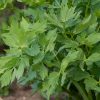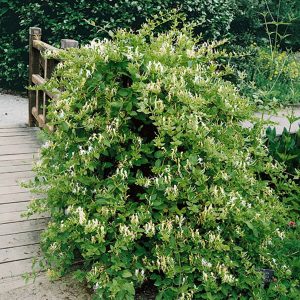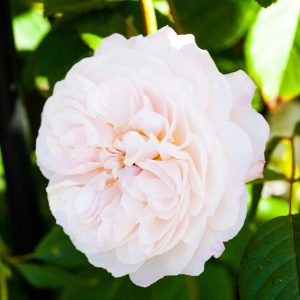Description
Levisticum genus. Levisticum officinale, also known as Lovage, is a large perennial herb that is native to the Mediterranean region. It is known for its tall, sturdy stalks and large, glossy green leaves that have a celery-like flavor and aroma. The plant produces clusters of small, yellow flowers in the summer, followed by small, brown seed heads. It grows to a height of 2m and width of 0.5m. It prefers full sun to partial shade and well-drained soil. The leaves, stem, and seeds are edible and can be used to flavor soups, stews, and salads. The root can be used to make a tea that is believed to have medicinal properties. Levisticum officinale is a great addition to any herb or vegetable garden and it will add a unique flavor to your dishes.
Key Facts
- Common Name(s):Lovage
- Hardiness:Fully hardy
- How big will I get? Levisticum officinale can grow to a height of 2m and a spread of 0.5m.
- Did You Know That:The root of lovage can be used as a substitute for parsnips or carrots?
Plant Calendar
A rough guide to how this plant will change through the year.
| Jan | Feb | Mar | Apr | May | June | July | Aug | Sept | Oct | Nov | Dec | |
| Flowering Time |  |
 |
||||||||||
| Foliage Colour |  |
 |
 |
 |
 |
 |
 |
 |
 |
| J | F | M | A | M | J | J | A | S | O | N | D |
 |
 |
||||||||||
 |
 |
 |
 |
 |
 |
 |
 |
 |
Care Guide

Soil Requirements
Levisticum officinale prefers moist but well-draining soil. This plant can grow in soil with a wide range of pH levels, it is not picky about the pH level of the soil.

Best Position
Levisticum officinale can handle either an exposed or a sheltered position and requires full sun to thrive, this consists of more than six hours of direct sunshine per day.

Maintenance
Levisticum officinale should be cut back after it finishes flowering will promote growth the following year by redirecting energy from seed production and foliage maintenance to root growth.

Pest, Diseases and Wildlife
Levisticum officinale can have problems with leaf miners, and it tends not to have problems with diseases. It is also known to attract bees, butterflies and other pollinators. It is not considered to be toxic.
![Levisticum officinale [Lovage]](https://leafwise.co.uk/wp-content/uploads/2022/11/Levisticum-officinale-Lovage.jpg)




